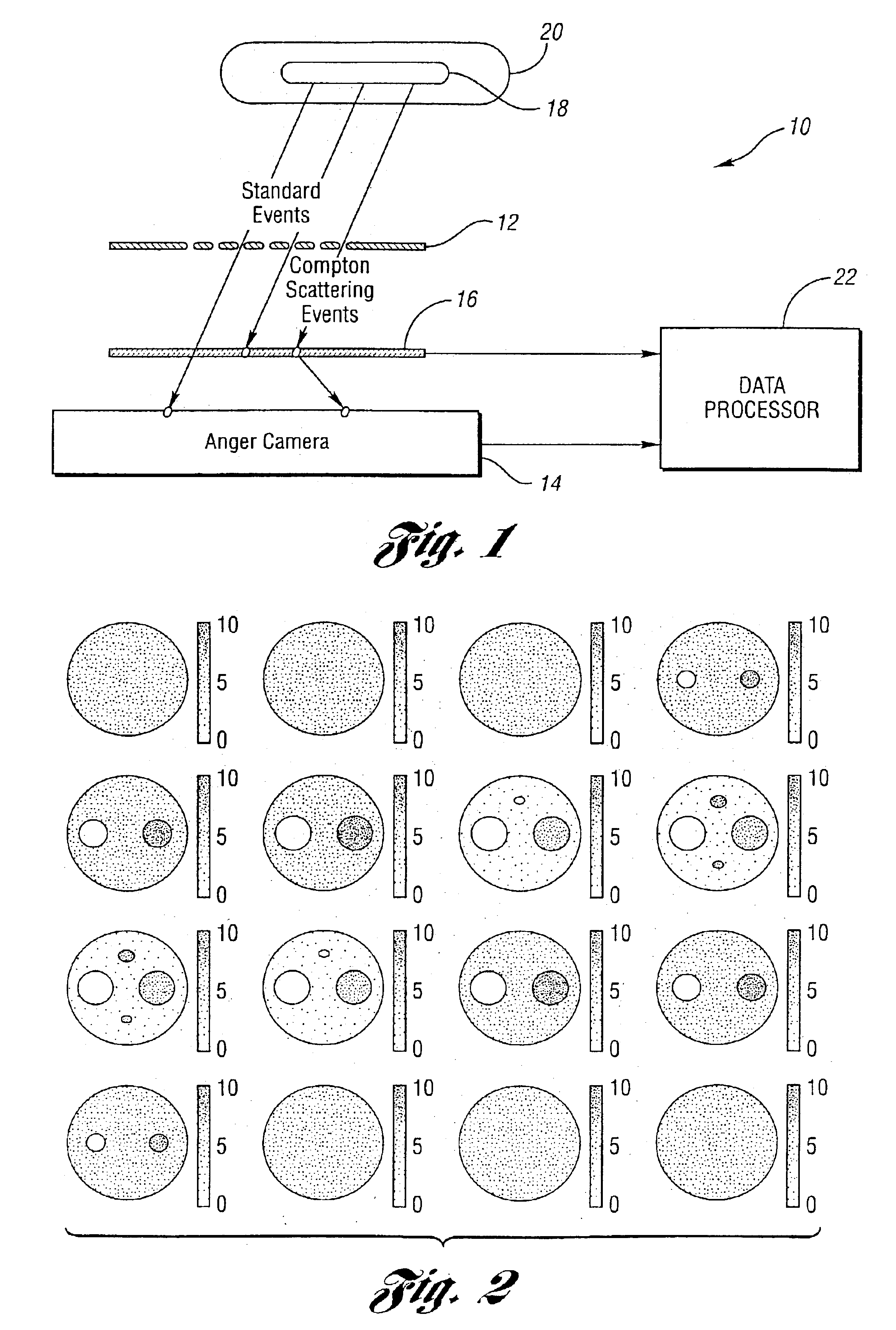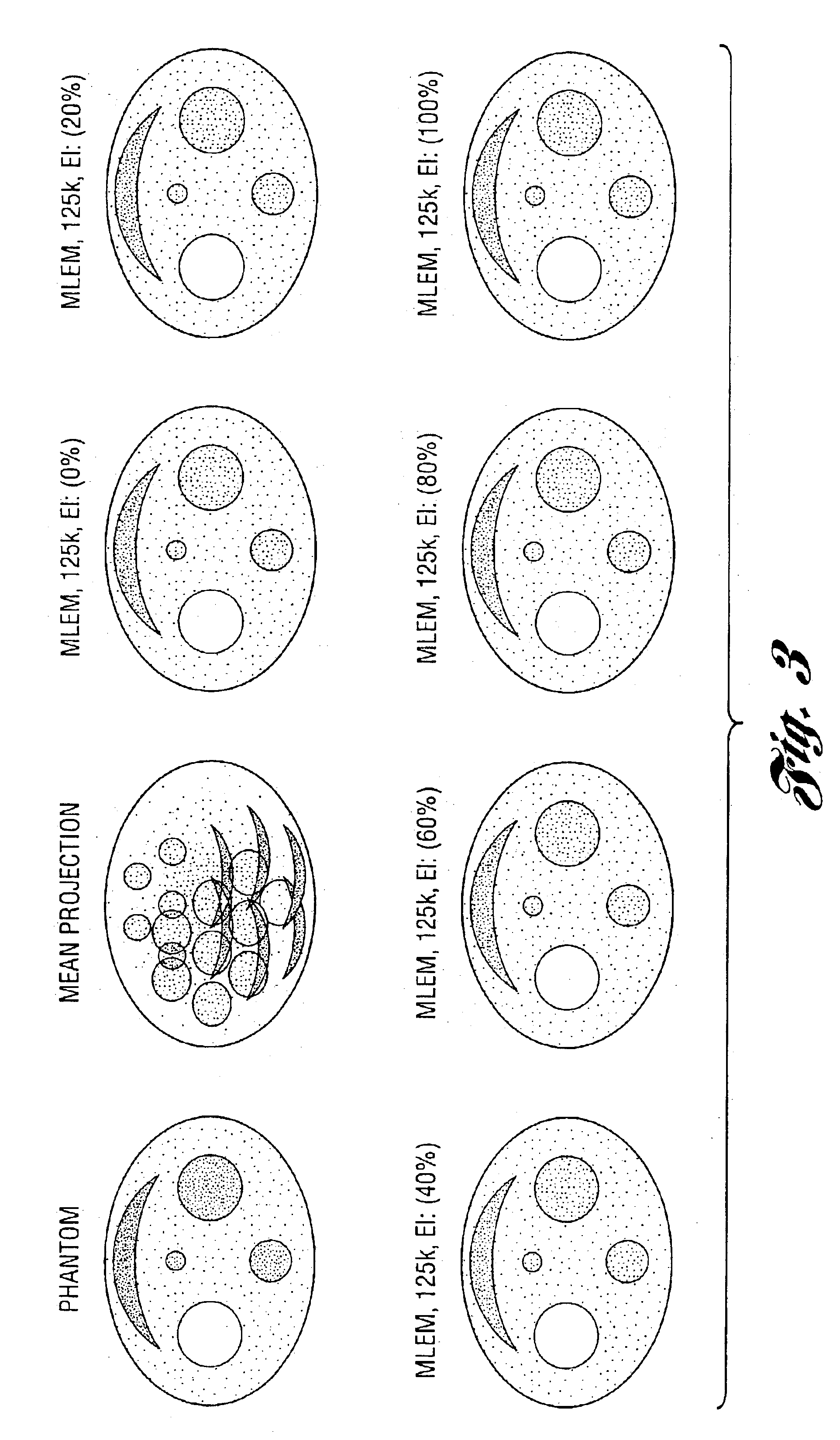Method and system for generating an image of the radiation density of a source of photons located in an object
a radiation density and source technology, applied in the field of methods and systems, can solve the problems of deteriorating signal-to-noise ratio in the collected data, unrealistically large number of counts normally required, and high cost of information conveyed, so as to improve image quality
- Summary
- Abstract
- Description
- Claims
- Application Information
AI Technical Summary
Benefits of technology
Problems solved by technology
Method used
Image
Examples
Embodiment Construction
[0034]In general, the present invention combines mechanical collimation provided by a coded aperture, a multiple pinhole or a rotating slit with electronic collimation provided by a Compton scattering camera. It offers improved detection sensitivity and imaging capability compared with a standard Gamma camera using parallel hole or pinhole collimation. A multiple pinhole, a rotating slit collimator or a coded aperture is combined with electronic collimation in such a way that the low spatial frequency signal detected using the Compton camera is combined, in real-time, with the high spatial frequency components provided by the mechanical collimation. This information is used in image reconstruction, and offers a superior image quality comparing with using solely one collimation method.
[0035]Referring now to FIG. 1, a system of the invention, generally indicated at 10, includes a mechanical collimator, such as a multiple-pinhole collimator 12, a position sensitive scintillation detect...
PUM
 Login to View More
Login to View More Abstract
Description
Claims
Application Information
 Login to View More
Login to View More - R&D
- Intellectual Property
- Life Sciences
- Materials
- Tech Scout
- Unparalleled Data Quality
- Higher Quality Content
- 60% Fewer Hallucinations
Browse by: Latest US Patents, China's latest patents, Technical Efficacy Thesaurus, Application Domain, Technology Topic, Popular Technical Reports.
© 2025 PatSnap. All rights reserved.Legal|Privacy policy|Modern Slavery Act Transparency Statement|Sitemap|About US| Contact US: help@patsnap.com



